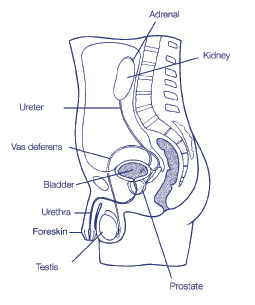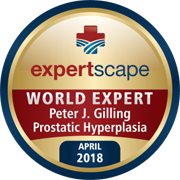- Men
- Bilateral Scrotal Orchidectomy
- Bladder Neck Incision (B.N.I.) and Urethrotomy
- Brachytherapy
- Circumcision
- Cystoscopy
- Flexible Cystoscopy
- Hydrocelectomy Spermatocelectomy & Epididymal Cystectomy
- Inguinal Orchidectomy
- Kidney Cryotherapy
- Laparoscopic Nephrectomy
- Laproscopic Pyeloplasty
- Laser Prostatectomy
- Magnetic Resonance Imaging (MRI) Scan
- Nephrectomy
- Orchidopexy
- Other Services (Men & Women)
- Other Treatments (Men Only)
- Robotic Assisted Laparoscopic Prostatectomy
- Sexual Dysfunction
- Transperineal Ultrasound Guided Prostate Biopsy (TPPB)
- Transrectal Ultrasound & Biopsies of the Prostate
- Transurethral Resection of Bladder Tumour
- Ureteroscopy
- Vasectomy
- Women
- Children
- Clinical Trials
Treatment Process:
Circumcision
This information is designed to help you, your family and friends prepare for your surgery. It will also help you plan how to take care of yourself in the weeks following discharge from hospital.
Treatment
A circumcision is an operation that removes the foreskin from the penis, exposing the underlying head medically known as the glans. Circumcisions are usually carried out because of phimosis (an abnormally tight foreskin), or if the foreskin is stuck to the underlying glans.
Both of these conditions prevent the foreskin being retracted, which can cause hygiene problems, infection and pain. Circumcisions are also carried out for social, religious and cultural reasons.
Following removal of the foreskin two skin edges remain; these are joined together with fine dissolving stitches.
A wound dressing or solution is then applied around the penis to aid healing.
The operation is a day stay procedure, which means no overnight stay is required.
Your Consent
We need permission for the operation to go ahead. Before the consent is signed, it is important that the risks and effects of the operation and anaesthetic are understood. These will be discussed prior to surgery. Should any questions arise after the discussion please feel free to ask the nurse or doctor who would be happy to answer these.
About Your Anaesthetic
Usually nothing is allowed to be eaten or drunk for at least six hours before surgery. This includes chewing gum and sweets. However, for very young children this is not usually the case and individual instructions are given about ‘nil by mouth’ requirements prior to surgery.
There are two main types of anaesthetic used for this surgery;
- General Anaesthetic: Patients are asleep throughout the operation and remember nothing of it. For young children, gas is given through a small mask, which puts the child off to sleep and avoids the need for the insertion of a needle while the child is awake. However, as soon as the child is asleep, a drip is put in for safety reasons.
- Regional Anaesthetic e.g. Spinal, Epidural or Caudal: A needle is placed into the back and a solution is injected that numbs the body from the waist down. Patients are awake but maybe sleepy and do not feel the operation. For young children a general anaesthetic is usually combined with a caudal. This ensures the child is asleep during the operation, but when they wake, the caudal continues to work for several hours blocking the nerve supply to the penis and preventing pain.
Feel free to discuss these options, and any questions with the anaesthetist.
Adults must not drive any vehicle or operate any machinery for 24 hours after having an anaesthetic. Arrangements would need to be made for transport to get home.
Your Operation
On admission, you will be informed of the approximate time of surgery and preparations would be completed by the nurse so everything is ready for theatre.
Some tablets may be given before theatre. These are charted by the anaesthetist and may include tablets for tension, nausea and pain prevention.
You, or the parents and child, would be escorted on a bed to the theatre and (your son) transferred to the operating table. Anaesthetic staff will then insert a drip, or apply a mask and attach various monitoring devices. Once all the preparations are complete and the anaesthetic has been given, surgery will begin. The operation takes about 30 minutes to perform.
When the operation is completed, patients go to the recovery room. In the case of a child, one parent is usually able to meet their child in the recovery room if necessary. Patients stay in the recovery room only for a short while where they are cared for until ready to be transferred to the ward.
After Surgery
The nurse will check blood pressure, pulse and wound routinely.
A drip maybe present to ensure adequate fluid intake is maintained until patients are drinking normally. Patients can usually eat and drink when they return to the ward.
If a spinal or caudal anaesthetic was given, adult patients are asked to lie flat for several hours after returning to the ward to allow for the anaesthetic to wear off. However, children can get up if they are not too wobbly on their feet.
Pain relief is given on a regular basis to ensure comfort is maintained.
At all times, the nurse is there to help, please ring the bell if assistance is needed and the nurse is not nearby.
Going Home
Once patients have passed urine, are up and about, eating and drinking they are able to go home. The nurse gives instructions on whether or not it is necessary to see the surgeon or family doctor for follow-up.
A discharge information letter is given prior to discharge that contains helpful information for returning home.
The doctor may give a prescription for some antibiotics after the operation. It is important to complete the whole course as instructed, even if everything looks okay and it doesn’t look like any more tablets need to be taken.
A letter is sent to the family doctor about the operation and the details of treatment given in hospital.
Once Home
It is important for day stay patients to take things quietly for the rest of the day as the anaesthetic can still have some effects on the body.
Regular pain relief can be taken as required to maintain comfort. Advice about post-op pain relief will be given by the nurse prior to discharge. Panadol is usually used for adults undergoing circumcision and Prindette or Pamol syrup is given to children.
Instructions about wound and dressing care will be given by the nurse prior to discharge. The stitches placed during the operation dissolve slowly in the weeks following surgery. To start with, the penis may look red and swollen but this soon settles. If the foreskin was stuck to the glans prior to surgery there will be a raw skin surface on the glans where the foreskin was removed. This forms a scab that can look unpleasant, however this usually heals up nicely and leaves no permanent scar.
Once home, if there is any excessive bleeding or signs of infection please see the family doctor as soon as possible.
Very rarely a circumcision can result in narrowing of the urethral opening (where the urine is passed from the bladder). This may require a very minor procedure to open it up again. However, the majority of patients have a short hospital stay, a very speedy recovery and require no further treatment.
While you are in hospital, we will do everything we can to make your stay as comfortable as possible. The nursing and medical staff are always available to help with whatever needs you have. If you are worried about anything before or after your surgery, or if you have any further questions or would like more information, please do not hesitate to ask your nurse who will be more than happy to help.


